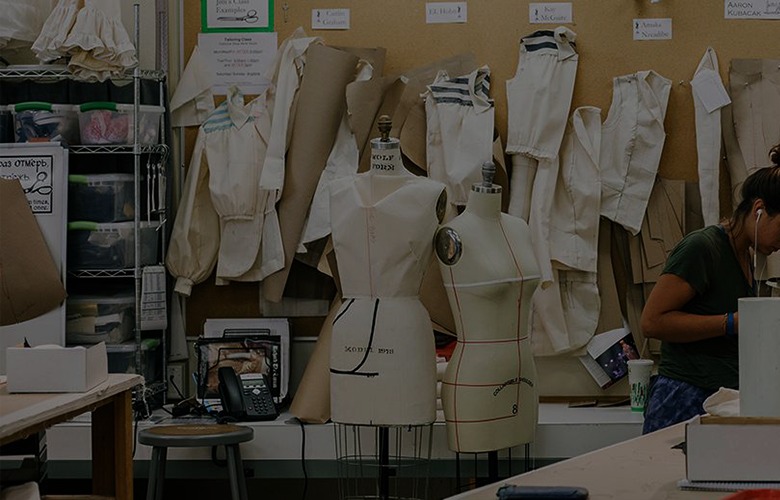
After spending hours at a time laboring over a sewing machine, loading the last laundry load of the night, and hanging up costumes following a quick change, feeling aches and pains are just part of the job. Right? Wrong.
I recently spent time behind the scenes of a mega production evaluating the costume department’ s daily routine and identifying ways to prevent injuries. Here are key changes, recommendations, and tips that can be made to avoid neck and back injuries in the wardrobe/ costume department.
Posturing
The single most important thing that you can do to safeguard your body in the costume shop is utilize proper posture. To give your body the support it needs to perform at its best, it must be in proper alignment. Achieving “good” posture involves training your body to stand, walk, sit, and lie in positions where the least strain is placed on supporting muscles and ligaments during movement or weight-bearing activities. Maintaining proper posture has a myriad of health benefits like allowing joints and muscles to work most efficiently, prevents the spine from becoming fixed in abnormal positions, and lowers the chance for fatigue and injury to occur. Plus, when you have great posture, people notice in a very positive way!
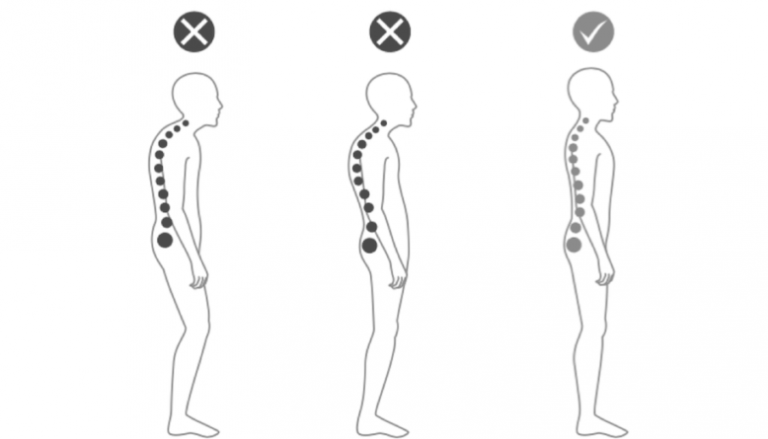
Does Your Workstation Need An Alteration?
If you look around the costume shop, do you see your co-workers hunched over a table or sewing machine? Are they sitting on a stool that is too high or too low?
While the costume shop isn’t a standard office desk environment, there are key adjustments to work stations that can be done to decrease strain and stress on the body. When sitting for long periods of time with rounded shoulders or in generally poor postural alignment, small aches and pains can lead to shoulder rotator cuff injuries, carpal tunnel syndrome, nerve impingements, and more.

Regardless of your workstation, it is imperative that you can maintain a good working posture while seated. You should be able to sit in a neutral body position with a relaxed posture. Don’t endure stressful angles or excessive reaching to complete your tasks. Change your environment!
As you are working at your “desk”, are your hands, wrists, and forearms in line or parallel to the floor? Put the costume down for a moment and check! Also, your head should be level, facing forward with no turn to the left or right, and generally be in line with the torso. Of course, you are not staring at a computer screen all day like someone who sits at a traditional desk but the main point is that you can work on your tasks without bending yourself into awkward positions and then holding them for eight plus hours a day.
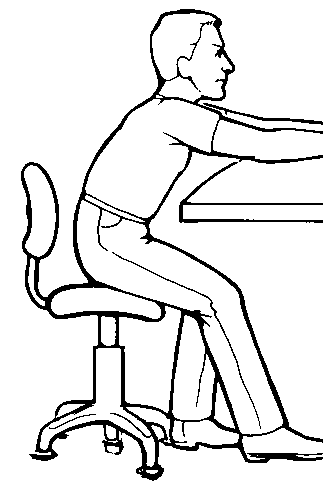
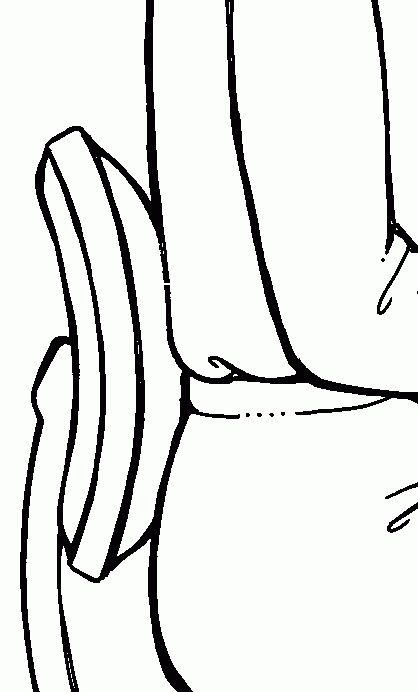
From Left to Right: Poor seated posture (neck in poor alignment, curved spine, and excess reaching of arms); Proper seated position.
Standing at your workstation is also recommended and can be very ergonomically sound. If you want to stand, however, you must maintain good posture, wear supportive and comfortable shoes, and stand on a forgiving surface like a padded mat or sprung floor. Essentially, the same rules apply as they do for seated work. You must be able to stand up straight while keeping arms and wrists in the neutral position. Also, try to position all of your equipment in close proximity to your body so that you are not tempted to reach for the items that you need to use. If you find that you need to reach something, perhaps consider walking over to the item to grab it versus reaching across the table.
When you are working, do you ever feel a dull ache in your neck, wrists, low back? When this happens, your body is telling you “I need a break!” It is important to take every opportunity that you can in between projects, on the hour, or whenever you can to stretch, switch positions, and most importantly – walk away for a moment. Not taking breaks or choosing to spend your breaks in another awkward position (slouched on a couch or bench) is a bad idea. Take the time to refresh, recharge, and rejuvenate your body several times a day. Always take allotted break times regularly and take time during the break to stretch, drink water, or walk away from your work station.
It’s Show Time
Are you responsible for pre-sets? There is no doubt about it, pre-sets can be rigorous, especially when handling heavy costumes. There is no need to purely muscle through this daunting task and it can become more manageable on a daily basis. The most important skill to remember is maintaining proper posture. When you are in constant motion lifting and loading costumes, stay aware of your posture (stand up straight, engage your core muscles, and place your shoulders into a strong position). Maintain a strong posture while reaching overhead and if possible use a step or stool to reduce your chances of over-reaching and causing injury. Minimize bending as much as possible, utilize a cart or high bench at a shelf to decrease the number of times you must bend over during a project. Another great body saving tip is to push Z-Racks or other racks rather than pull. Also if you must pull a rack over a stoop or doorway/elevator ledge, ask a partner for help.

Let’s Talk Laundry
Doing laundry is an essential task for wardrobe departments and the act of loading and unloading washers and dryers can be a heavy task. Take some time to evaluate where supplies are located in the laundry room. For instance, is the detergent on a high shelf? Do you have to reach for it? Is the container massive and heavy?
There are so many variables in the laundry room but one that is certain, there will be bending at the waist, lifting heavy loads, and changing over laundry frequently, so there are a few key things that you can do to safeguard yourself in the laundry room.
Avoid over stretching as much as possible by utilizing a step stool or bench to avoid over head reaching when possible. A common culprit of over-reaching is with accessing the laundry detergent. Placement is key here. Of course, it is important for the detergent to be conveniently located but also, it should be considered how everyone can reach it with ease, like a table top or waist high shelf in the laundry room.
When it’s time to begin hanging costumes to dry, identify a way to place all items on a waist high surface like a laundry cart. Bending down to retrieve costumes laying on the bottom of a rack or in a hamper is not ideal and will cause lower back issues over time. When assessing items for repair, bring them to chest height or sit down on a stool to avoid bending over for prolonged periods. Finally, after the major task of laundry duty is over, take the opportunity to perform a few stretching exercises to reset your body.
Plan Of Action
Identifying a stretching or therapeutic exercise program is essential to decrease injury in the wardrobe department. These activities can be done in the morning before work but more importantly, they will be essential to perform throughout the day or at the end of a shift to rejuvenate the body after the stress of a work day. If you are dealing with an existing injury, please check with a medical professional prior to starting any new exercise or stretching programs. Most of all, never force a stretch or exercise. If you experience pain, stop! All stretching and therapeutic exercise should improve your muscle aches and pains, not cause you more issues.
Cervical Spine (Neck & Upper Back) Stretches
Stretching exercises help to restore joint range of motion by lengthening shortened muscles and connective tissue, which helps to reduce pain and tightness.
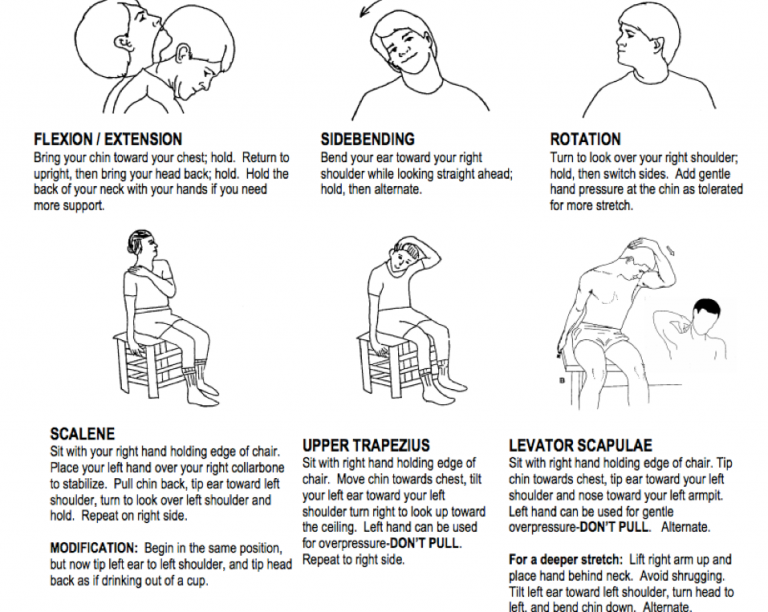
Chin Tucks
To increase the strength and stability of the neck muscles
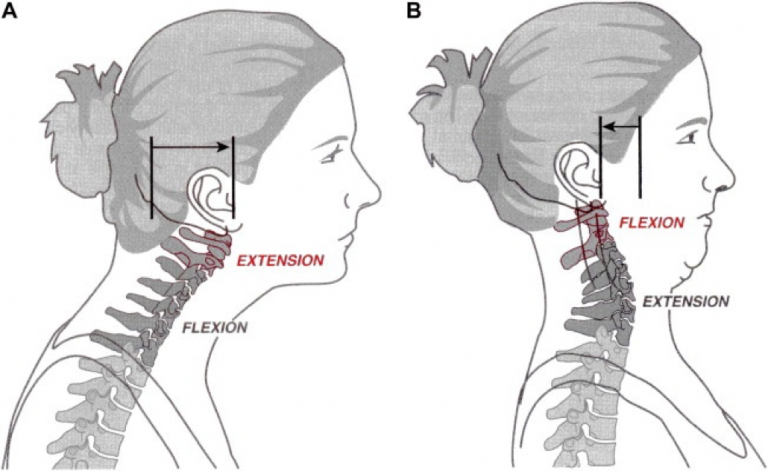
1. Adjust your position to standing or sitting tall in your chair.
2. Imagine you are suspended by a piece of string from the crown of your head.
3. Protrude your chin forward and then slide it back into place (you will create wrinkles under your chin if you are doing this exercise correctly).
Doorway, Wall, Corner Stretch
To stretch the pectoral and neck muscles that get very tight from sitting and standing with rounded shoulders
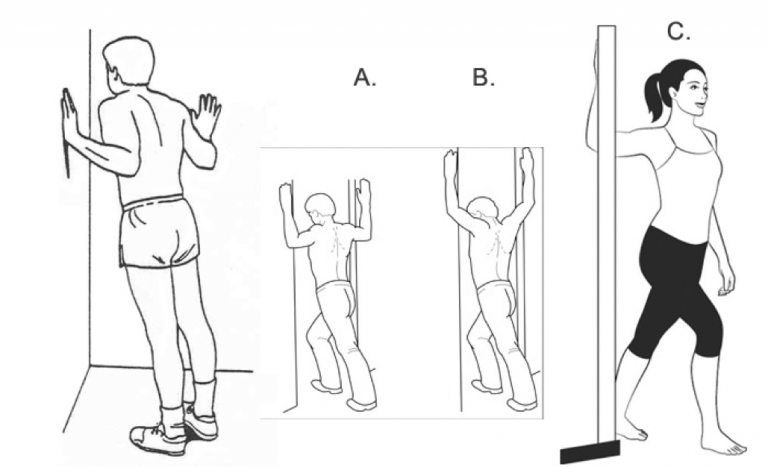
Foam Roller Exercises and Stretching
To mobilize the spine and chest to improve flexibility to decrease pain and stiffness.
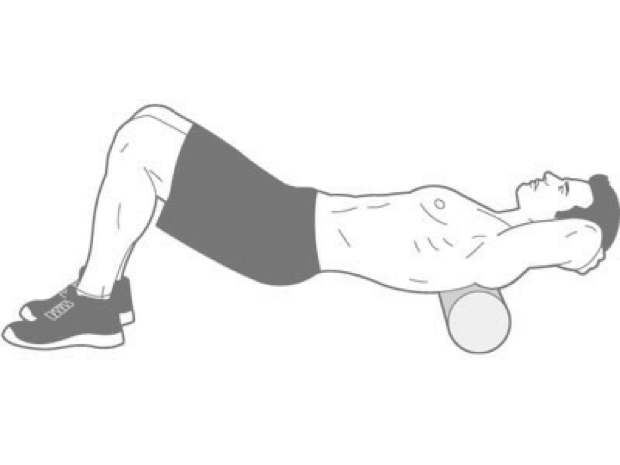
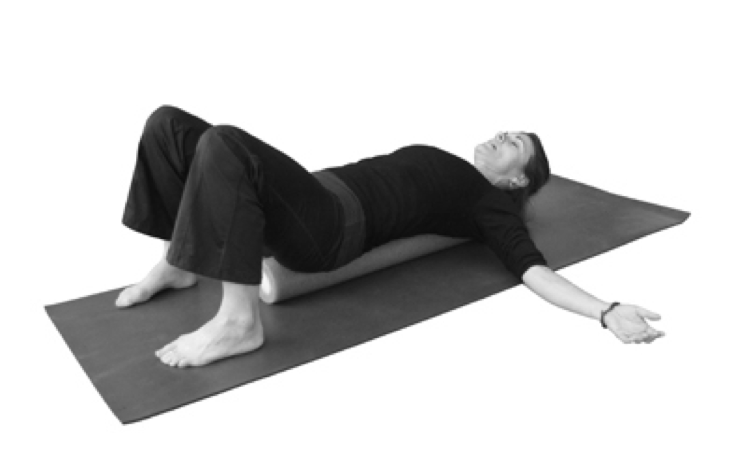
Wrist and Hand Stretching
To increase flexibility, improve blood flow of the forearm, wrist, hands and fingers. To prevent carpal tunnel syndrome.
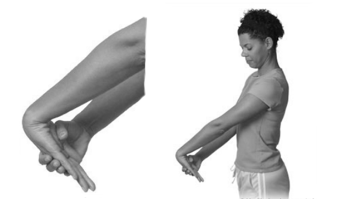
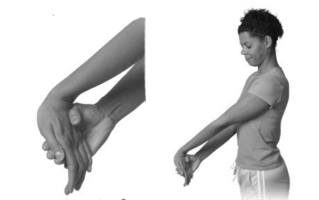

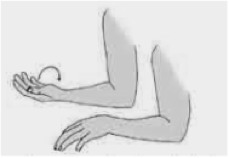
High, Middle, Low Rowing Exercise with Elastic Band
To strengthen upper back musculature to improve posture

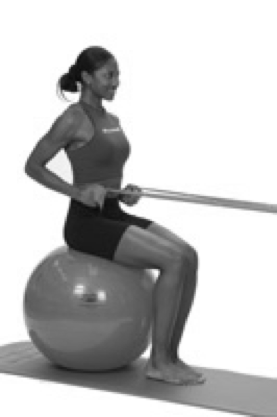
You will complete this exercise in three different positions. You may stand or sit as per your preference:
To begin: Fold the elastic band in half and tie a knot on the end. Close the knot in a door at the starting height. Make sure that the knot is secure in the door because when you pull on the elastic band, you do not want the knot to fly out and hit you.
Core Strengthening
To provide stability and strength to your low back and abdominal region
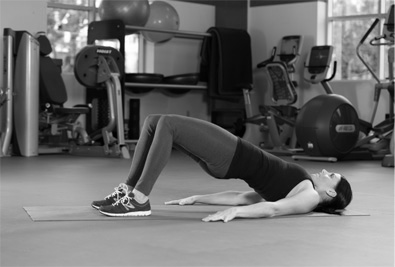
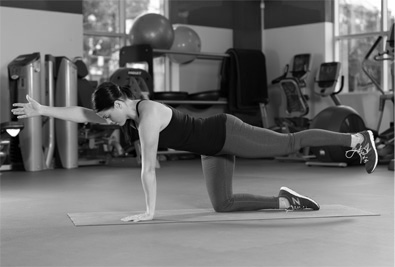
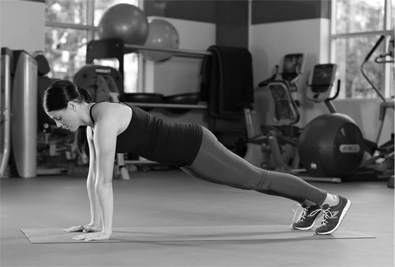
Lower Extremity (Hamstrings, Quadriceps, Calves, etc) Stretching
Increase lower extremity flexibility and reduce restriction in the low back and hip regions of the body

In Conclusion
Only you can take the initiative to care for your body at work and home. While your employer is most likely taking precautions to make sure that your work space is safe by following OSHA requirements, you must do your part as well. Take breaks, use good posture, and most of all take care of yourself. As a wise person once said, “We only get one body in life, so take care of it!”
Operations Director In Paradise: Jamie Sullivans Journey to JOYÀ
Take A Deep Breath And Other Tips For Entry Level Creatives


Ashley Sutherland is Co-Founder of TheatreArtLife. Originally from Birmingham, Alabama in the United States of America, Ashley works in marketing and public relations specializing in the entertainment and healthcare fields. She is also a board certified and licensed Athletic Trainer. She holds a Bachelor of Science degree from The University of Alabama and a Master of Science degree from Indiana University. Ashley has worked as a performing arts medicine specialist and certified Athletic Trainer on some of the world's top-rated productions in the world. Some of her credits include "The Beatles LOVE", "Mystere", "Viva Elvis" and "Kooza" by Cirque du Soleil, Michael Flatley’s "Lord of the Dance", "Blue Man Group", "Blast!, the "Radio City Christmas Spectacular" with the legendary Radio City Rockettes, and the Indiana University Ballet. Ashley passionately advocates for pediatric cancer. She sits on the Board of Directors for Circus Couture, a charity, fashion, art, and performance event raising funds for research and treatment for cancer, genetic disorders, and hemophilia in children at The Children’s Specialty Center of Nevada and Cure 4 the Kids Foundation in Las Vegas, Nevada. Ashley resides in New York City.
Read Full Profile© 2021 TheatreArtLife. All rights reserved.

Thank you so much for reading, but you have now reached your free article limit for this month.
Our contributors are currently writing more articles for you to enjoy.
To keep reading, all you have to do is become a subscriber and then you can read unlimited articles anytime.
Your investment will help us continue to ignite connections across the globe in live entertainment and build this community for industry professionals.